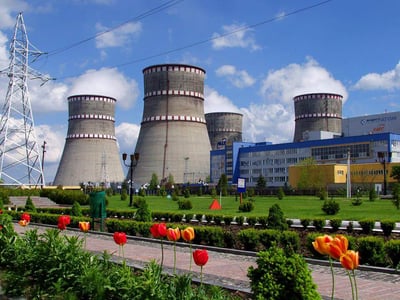Long-Term Containment Cooling Systems Are a Key Safety Enhancement for Severe Accident Management
Rivne, Ukraine, June 13, 2023 – Westinghouse Electric Company announced today it has signed a contract with Energoatom to design, manufacture and deliver Long-Term Containment Cooling Systems as part of the modernization of Rivne Nuclear Power Plant Units 1 and 2 in northern Ukraine. The cooling systems will greatly improve safety margins at the site by ensuring stable heat removal and effective containment depressurization in the case of an accident.

Pictured above: Rivne Nuclear Power Plant - Units 1 and 2. Photo courtesy of Energoatom.
This is the first time Westinghouse will deliver Long-Term Containment Cooling Systems (LCCS) to support Severe Accident Management at Russian-designed VVER-440 reactors. The LCCSs will be manufactured by Westinghouse, using the company’s patented solution specifically designed for the global VVER-440 fleet, then delivered to Rivne next year.
“This contract is part of our commitment to helping Ukraine secure a reliable, safe energy future,” said Dan Sumner, President of Westinghouse Operating Plant Services. “Safety upgrades like the Long-Term Containment Cooling Systems will improve the safety of Energoatom’s VVER-440 reactors for decades to come.”
This major engineering contract strengthens a longstanding strategic partnership between Westinghouse and Energoatom that includes supplying all VVER nuclear fuel for the country’s operating reactor fleet and collaborating on the deployment of nine new AP1000® reactors in Ukraine.
Westinghouse’s Operating Plant Services delivers world-class equipment, technology and site management to nuclear facilities across the world. Westinghouse supplies more than 100,000 parts and products annually to operators to keep nuclear power plants running safely and reliably while extending long-term operations, and design state-of-the-art technologies to minimize planned refueling and maintenance outages.


